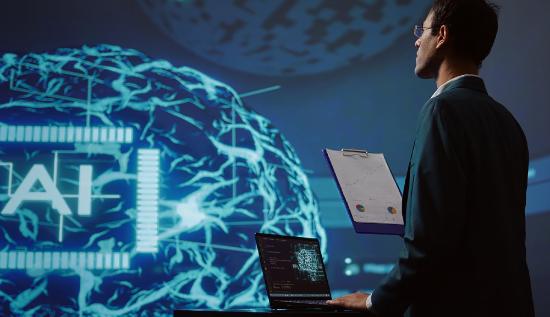Blockchain Beyond Crypto: Web3 Use Cases & Applications

A clear look at blockchain use cases beyond crypto, focusing on Web3 identity tools, transparent logistics, digital governance, and real-world asset tokenization.
There was a period of time when blockchain technology was synonymous with digital currencies such as Bitcoin and Ethereum, as well as the wider universe of digital currency. However, despite the fact that bitcoin continues to be the most well-known implementation, the technology that underpins it has developed much beyond its initial focus on financial transactions. The advancements that have been made in Web3 architecture are currently fueling an ecosystem of tools, platforms, and real-world solutions that are causing sectors to undergo transformation. These developments shed light on a wide variety of blockchain use cases beyond crypto. They demonstrate how decentralized systems are transforming identification, commerce, supply networks, asset ownership, data integrity, and even public government.
An increasing number of organizations are beginning to see blockchain not only as a cryptographic ledger, but also as an infrastructure for digital interactions that are transparent, safe, tamper-resistant, and user-controlled. This realization comes as firms continue to investigate Web3 real world applications. Listed here are some of the most significant applications of blockchain technology that are not related to digital currency, as well as the reasons why distributed trust will be the driving force behind the future generation of the internet.
Decentralized Identity & Authentication in Web3
The concept of identification is among the most significant Web3 use cases beyond cryptocurrency. Credentials, user authentication and data management are all tasks that are handled by traditional identity systems which are dependent on centralized authority such as governments, corporations or social platforms. On the other hand, these centralized solutions frequently experience shortcomings such as data breaches, privacy concerns, and a lack of user control.
Blockchain Identity Management
In an effort to address these issues, new blockchain identity management frameworks are being developed with the intention of providing individuals with complete ownership of their personal information. The users of decentralized networks are responsible for maintaining their cryptographic credentials, as opposed to keeping their identity details on centralized servers. The use of this paradigm minimizes unauthorized access, lessens the reliance on intermediaries and guarantees that identification data will continue to be verifiable while maintaining its confidentiality.
Decentralized Identity (DID) Web3
Within the context of this transformation, the development of decentralized identity (DID) Web3 standards is a significant component. Through the use of DID technology, users are able to generate self-sovereign identities that are capable of being validated by blockchain without the disclosure of superfluous personal data. It is possible to use these DIDs for:
- Checking in with the services
- The verification of citizenship or age
- Sharing credentials in the fields of education or employment
- Making use of various financial services
- Proof of ownership of digital assets
The requirements for authentication and trust are going to continue to increase, and this applies to both online platforms and physical businesses. The Web3’s decentralized identity system using blockchain, provides a safe and scalable solution to meet these expectations. The rise of Web3 for digital identity is, in fact, one of the most illustrative examples of how blockchain is used outside of crypto in ways that are both relevant and socially influential.
Supply Chain Transparency & Traceability
The management of supply chains is yet another important area of blockchain use cases beyond crypto. Transparency is essential to the success of global business; nevertheless, existing supply chain systems, are frequently opaque, complicated and extremely susceptible to fraud. Blockchain technology offers a ledger that cannot be altered and records every stage of a product's journey, beginning with the raw materials and ending with the delivery of the final.Blockchain Supply Chain Transparency
Companies are able to track origins, verify authenticity and monitor logistics in real time thanks to the transparency, that blockchain supply chain transparency. This has a wide range of applications, including:
- Ensuring that raw supplies are sourced in an ethical manner
- Lowering the number of counterfeit items sold in premium markets
- The monitoring of the safety of pharmaceuticals and food
- Carbon emissions monitoring and control
- Making environmental, social, and governance reporting more open
The unchangeable records enabled by blockchain technology ensure that data cannot be altered, which makes it substantially more difficult to commit fraud. Supply chain-focused Web3 real world applications are fast gaining traction as sustainability, and transparency become increasingly important on a global scale.
Tokenization of Real-World Assets
The greatest disruptive impact of tokenization resides in the process of turning physical or financial assets into digital representations that are based on blockchain technology. Tokenization has its origins in cryptocurrency. Tokenization of real world assets (RWA) is becoming increasingly popular, which is causing a transformation in the ways in which value is stored, transmitted, and retrieved.
Unlocking Liquidity and New Investment Models
As a result of tokenized assets' ability to provide fractional ownership, investors are now able to acquire pieces of items that were previously unavailable to them due to high prices or market obstacles. Among the examples are:
- Actual property
- Collector's items and works of art
- Assets of value
- The investments in the infrastructure
- Property that is intellectual
- Equity in corporations
Transparent ownership records, automated compliance, and smooth transfers are all guaranteed by RWA tokenization, which is accomplished through the use of smart contracts. This new asset layer is one of the most convincing instances of Web3 use cases beyond cryptocurrency. It integrates traditional markets into a format that is decentralized and widely accessible, making it one of the most appealing examples of those use cases.
Blockchain-Based Voting & Governance
The integrity of voting, participation, and openness are issues that democratic societies and organizations continue to grapple with at all times. blockchain-based voting systems in Web3 offer a game-changing answer that blockchain technology provides. Blockchain technology ensures that ballots are genuine that they are counted accurately and that they are resistant to manipulation. This is accomplished by recording votes on an immutable ledger.
Advantages of Web3 Voting Systems
- Cryptographically secure and tamper-evident votes are used to ensure election integrity.
- Results may be independently confirmed, which is a sign of transparency.
- Accessibility: Voting from a remote location or on a mobile device can help improve enrollment.
- Identification of voters can be concealed through the use of zero-knowledge proofs or encrypted data.
Not only does this make blockchain voting appealing for government elections, but it also makes it appealing for corporate governance, shareholder voting, university elections and decentralized autonomous organizations (DAOs). In addition, these governance models illustrate how blockchain is used outside of crypto in ways that have direct implications for societal and economic structures.
Decentralized Data Storage & Cloud Infrastructure
Another major frontier for Web3 real world applications is storage. Because traditional cloud services such as Amazon Web Services (AWS), Google Cloud, and Microsoft Azure are centralized, the data that they hold is kept in a small number of data centers. Because of this, vulnerabilities are created that are associated with data misuse, censorship, and downtime.
Distributed Storage via Web3 Networks
Storage networks that are enabled by blockchain technology, such as IPFS, Filecoin, Storj, and Arweave, distribute data between nodes located all over the world. However, in contrast to conventional clouds, these systems:
- Are they impervious to censorship?
- Providing a more robust redundancy
- Decrease your dependency on individual businesses.
- Make use of financial incentives in order to keep uptime.
The utility of blockchain use cases beyond crypto is demonstrated by these decentralized storage networks, which make it possible to create digital infrastructure that is more secure, durable, and democratic.
Digital Rights & Content Ownership
Web3 makes it feasible for creators to exercise control over their intellectual property in ways that were not conceivable using traditional methods. Managing rights can be accomplished without the need for intermediaries by means of non-fungible tokens (NFTs), tokenized licenses and verification systems, that are based on blockchain technology.
Use cases include:
- Digital ownership that can be verified
- Royalty distribution that is mechanized
- Permission to license openly
- An indication of originality
The broader drive toward decentralized content ownership is one of the most influential blockchain use cases beyond crypto, despite the fact that non-fungible tokens (NFTs) originated within the culture of bitcoin.
Healthcare: Interoperable Records & Secure Data Exchange
There are a number of issues, that are faced by healthcare systems all around the world, including fragmented data, concerns regarding privacy and sluggish access to patient records. By generating medical records that are unchangeable, secure and interoperable, blockchain-based healthcare networks are contributing to the elimination of these obstacles.
Possible applications include:
- Inter-hospital exchange of medical records
- Monitoring of prescription use
- Administration of consent
- Transparency in clinical trials
- Control of counterfeit pharmaceuticals
Particularly in situations, where medical identity theft and data corruption must be prevented, these developments are a useful complement to broader initiatives in blockchain identity management.
Energy Markets & Sustainability
Energy grids that are decentralized and enabled by blockchain technology, are making it possible for individuals to trade electricity with one another, improve carbon monitoring and operate grids more effectively. Residents have the opportunity to buy or sell solar energy using tokenized credits and utilities have the ability to validate sustainability claims using data that are open to public scrutiny.
These systems are yet another important illustration of Web3 real world applications and work in a manner that is not related to financial speculation.
Why Blockchain’s Future Extends Beyond Crypto
A vivid illustration of the rising diversity of blockchain use cases beyond crypto, is provided by the convergence of decentralized identification, tokenization, supply chain systems, governance and data infrastructure. Web3 is being adopted by industries because it provides advantages that cannot be matched by traditional technology architecture. These advantages include the following:
- The absence of intermediaries in trust
- Data that is both transparent and unchangeable
- Control of one's identity, and privacy by the user
- Robotic logic through the use of smart contracts
- Enhanced safety and security measures to prevent fraud
It is expected that Web3 will continue to unveil new applications of blockchain use cases beyond crypto as its popularity grows, thereby reinforcing its place as a core layer of the next digital era.
Conclusion
The expansion of blockchain technology beyond the realm of bitcoin is a significant turning point in the evolution of the internet. Whether it be blockchain identity management and decentralized identity (DID) Web3 systems, tokenization of real world assets, blockchain supply chain transparency and blockchain-based voting systems in Web3, the possibilities of decentralized technology are already extensive and continue to expand.
These advancements demonstrate that Web3 real world applications, are not just hype; rather, they are workable and scalable solutions to challenges that have been around for a long time across a variety of industries. The future of decentralized systems will be defined not by their affiliation with bitcoin but rather by their utility. This is because corporations, and governments are continuing to investigate Web3 for digital identity, asset management, governance and data integrity.
Because of the rapidly changing environment, businesses should adopt blockchain use cases beyond crypto in order to maintain their competitiveness, and security. It is possible that the most significant influence that blockchain technology will have is not the creation of new forms of currency but rather the facilitation of a digital world that is more trustworthy, equal, and transparent.
Read More: Top 5 Types of Blockchain Tech and The Use Cases in Cambodia
More Articles
 03 Nov 2025
03 Nov 2025
Emotion AI: Understanding Human Emotions with Technology
Integrating Emotion AI with digital identity solutions brings intelligent authentication and emotionally aware digital interactions.
 31 Oct 2025
31 Oct 2025
Voice AI for Business Productivity: Efficiency & Automation
Boost workplace efficiency with Voice AI! Discover how natural language processing and voice assistants automate tasks and power business productivity.
 30 Oct 2025
30 Oct 2025
Urban Air Mobility | Air Taxi Services & Next-Gen Travel
Urban air mobility and air taxi services are redefining the future of urban transportation through sustainable eVTOL innovation and smart-city integration.
 30 Oct 2025
30 Oct 2025
Carbon Footprint Reduction with AI | Green AI Solutions
Carbon footprint reduction with AI is reshaping sustainability through smart energy use, emission control, and intelligent innovation.